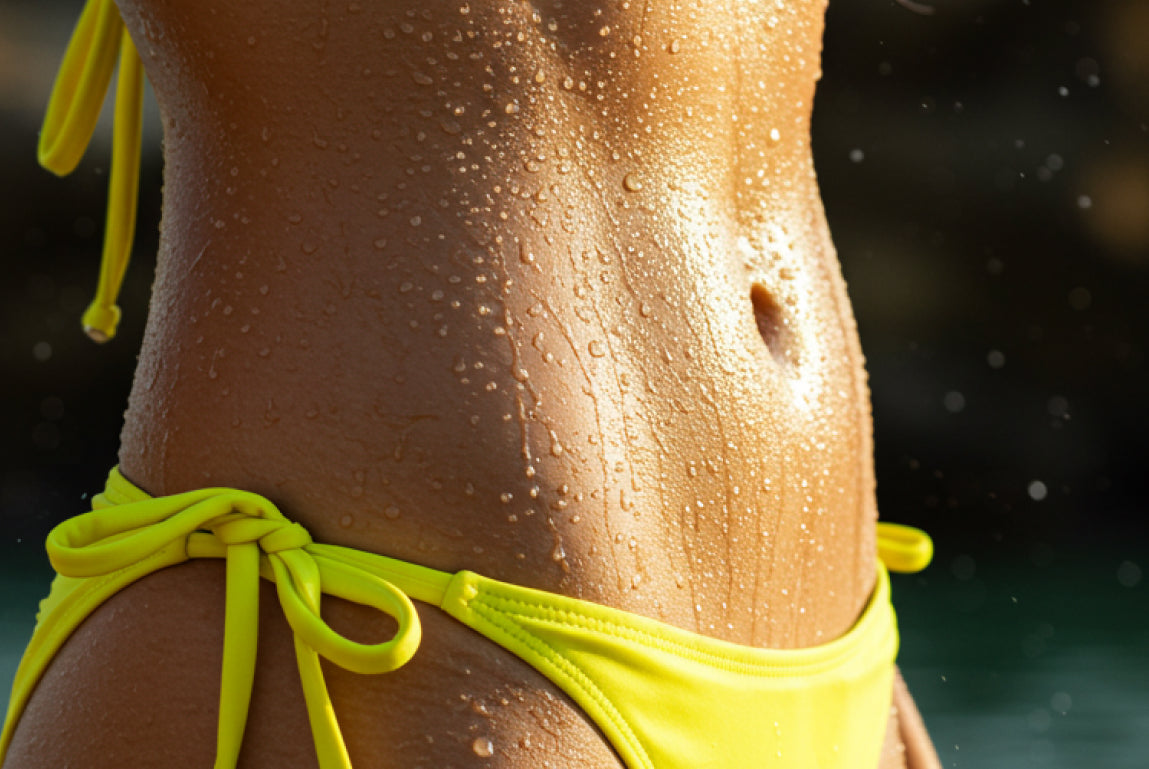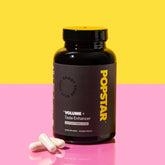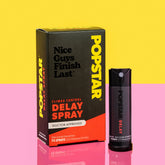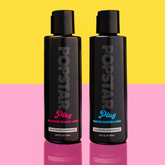

Table of Contents
Key Takeaways
Libido can fluctuate seasonally, with summer and spring often being peak desire months.
Winter isn’t dead—cuffing season and cozy vibes keep sex drive alive.
Autumn may feel slower, but pumpkin spice and romantic vibes can still stoke the fire.
Gender, hormones, culture, and mood all play roles in seasonal libido shifts.
Lifestyle hacks and Popstar products can help keep your sex life hot no matter the weather.
Let’s Talk About Your “Seasonal Arousal Disorder”
If you’ve ever felt extra frisky in July or suddenly less interested in action by November, you’re not imagining it. Libido, like your mood and energy levels, has seasonal patterns. Your sex drive doesn’t live in a vacuum. It’s influenced by hormones, light exposure, temperature, and even cultural rhythms (hello, cuffing season).
But before you panic that your bedroom is dictated by the weather report, let’s break down what science actually says about seasonal libido shifts. Spoiler: your sex drive might be seasonal, but that doesn’t mean it has to hibernate.
Summer Loving: Why Heat Turns Us On
“Summer lovin’, had me a blast” wasn’t just a catchy lyric. Research shows sex drive often peaks in the warmer months. Why?
More daylight = more testosterone. Studies suggest testosterone levels in men and women tend to rise with increased sunlight exposure. Translation: longer days can mean more action under the sheets.
Skin exposure. Shorts, swimsuits, sundresses, tank tops—our summer wardrobes naturally put more flesh on display. Cue visual stimulation and maybe a little friendly dehydration thirst.
Mood elevation. Sunlight boosts serotonin and dopamine, the “feel-good” brain chemicals that also fuel desire.
Summer is basically nature’s Viagra: more light, more hormones, more skin, more mood. If you’ve noticed your libido spiking in July, science has your back.
Winter Warmth: The Cuffing Season Effect
On the other hand, winter is no sexual wasteland. In fact, studies show internet searches for sex-related content spike during colder months, especially December and January. So what’s going on?
Cuffing season. As the temperature drops, people look for partners to cuddle (and more) with. Evolutionarily, it makes sense: body heat is sexy survival.
Holiday mood. Winter holidays often come with a cocktail of alcohol, festive vibes, and mistletoe opportunities.
Less daylight = more melatonin. Melatonin is the sleep hormone, and while it might reduce your overall energy, it also encourages more indoor activities. You know, the kind that require blankets and fewer clothes.
So winter desire might look different. Less sweaty passion, more cozy sex by candlelight. Both are hot in their own right.
Spring Fever: Not Just a Myth
Every year around April and May, there’s a noticeable uptick in sexual energy. It’s not just pollen clogging your sinuses, it’s hormones doing their thing.
Evolutionary biology. Historically, spring was prime mating season for humans and other animals. Fertility rates climb in late spring and early summer, likely thanks to daylight-driven hormone changes.
Aesthetic factor. People start shedding heavy winter clothes, hitting the gym, and showing off more skin. Desire blooms along with the flowers.
Psychological reset. The optimism of longer days and warmer weather gives your brain a signal to feel playful—and sometimes that translates to the bedroom.
Basically, spring fever is real, and yes, it often comes with a side of horniness.
Autumn Slowdown or Sexy Harvest?
Fall is complicated. For some, libido dips as days shorten and routines grind back into gear. For others, the crisp air and new beginnings spark desire.
Back-to-school brain. Stress ramps up with work and family routines. Stress = desire killer.
Pumpkin spice seduction. Believe it or not, studies show certain scents (like pumpkin pie and cinnamon) increase penile blood flow. Your latte might be doing more than you think.
Romantic vibe. Cooler weather means fireplaces, chunky sweaters, and an excuse to get closer under the covers.
So while autumn may not be the peak of libido, it’s definitely not the dry season either. Think of it as a transition: less frantic heat, more sensual connection.
Does Gender Affect Seasonal Libido?
Here’s where it gets even more interesting. Men’s testosterone levels show seasonal variation, often peaking in late summer and dropping in winter. Women’s sexual desire, however, doesn’t follow the same pattern. Some studies show ovulation rates increase slightly in late spring and summer, but cultural and personal factors often matter more than raw biology.
The takeaway? Men may feel hornier when the sun is high, but women’s desire is less predictable and often tied to relationship dynamics, stress, and mood as much as hormones.
Culture and Sex Drive: Holidays, Vacations, and Festivals
Science aside, cultural rhythms play a massive role in when people have more sex.
Vacations. Summer trips and holiday breaks give couples more time (and privacy) to get busy.
Festivals. From Pride celebrations to music festivals, large gatherings can lead to flirtation and hookups.
New Year’s resolutions. “New year, new me” often includes “new sex life.” Searches for dating apps and sexual health products peak in January.
So even if biology doesn’t fully explain seasonal libido, culture fills in the gaps.
Libido Hacks: How to Keep Desire High All Year
Whether you’re feeling like a July fireworks show or a January snoozefest, there are ways to boost libido any season.
Stay active. Exercise increases circulation, testosterone, and body confidence. All libido boosters.
Get your vitamin D. Sunlight and supplements keep hormones steady.
Manage stress. Stress is the fastest way to tank your sex drive. Yoga, meditation, or therapy can help.
Use tools that work. Supplements like Popstar Volume + Taste Supplement can boost performance and confidence. If lasting longer is your goal, Popstar Delay Spray might be your best seasonal accessory.
Conclusion: Your Sex Drive Isn’t on a Calendar
Sure, hormones and seasons play their part, but libido is ultimately personal. Some people are summer stallions, others are winter wolves. And plenty don’t follow any seasonal script at all.
The good news? You’re not powerless against the seasons. By understanding how biology, culture, and lifestyle impact desire, you can keep your sex life consistent—or even strategically seasonal if that’s your thing. Whether it’s beach sexcapades, cozy winter hookups, or spring fever flings, libido is less about the calendar and more about how you nurture it.
And if you want a little year-round backup, Popstar’s got your back.
Frequently Asked Questions
Is libido really higher in summer?
Yes, many studies show testosterone levels and sexual interest rise with more daylight exposure, which peaks in summer.
Does winter kill sex drive?
Not at all. Winter can encourage more intimacy through cuffing season, cozy vibes, and holiday energy.
What about spring fever—is that real?
Absolutely. Spring is linked with higher fertility, more daylight, and cultural feelings of renewal, which can all boost desire.
Can supplements help keep libido steady year-round?
Yes. Supplements like Popstar Volume + Taste can support sexual performance, and products like Delay Spray or lubricants can enhance confidence and pleasure.
Does everyone experience seasonal libido shifts the same way?
No. While some trends exist, individual experiences vary by gender, stress levels, culture, and personal health.











